It’s funny that going to the salt mines has always had the connotation of hard work. Today’s only hard work for me was walking. Mostly down. Others, though. Wow. I can barely conceive of the effort it took to carve out these humongous chambers and more than 300 kilometers of tunnels.
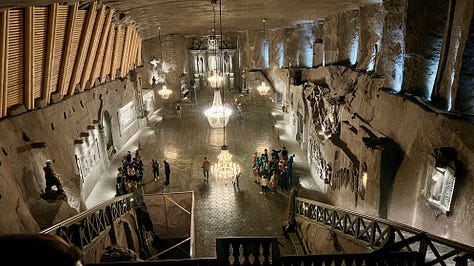
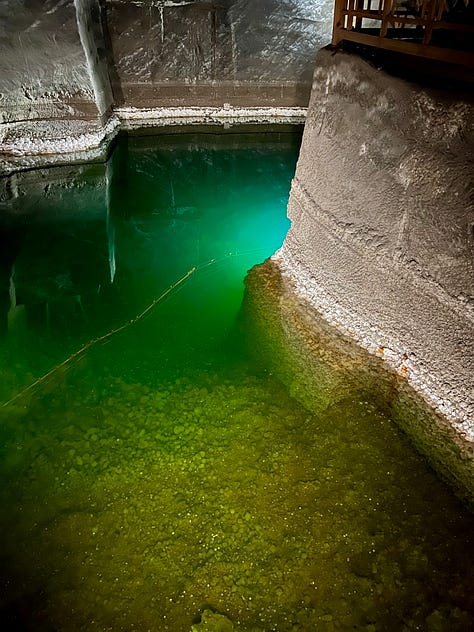
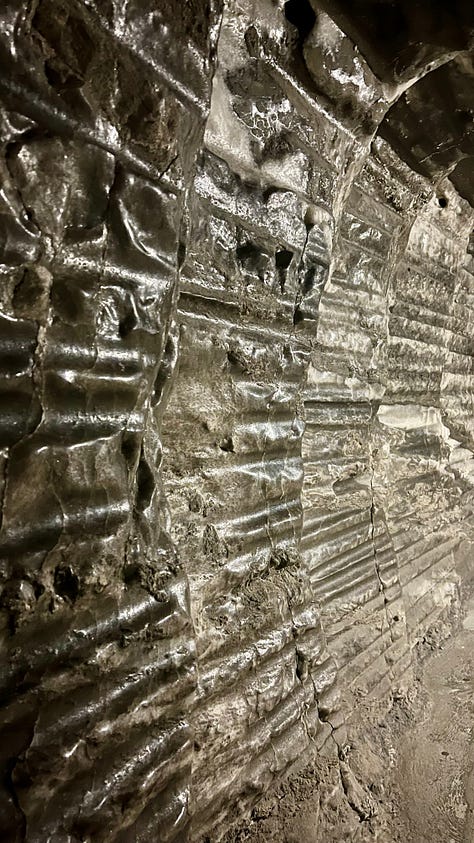

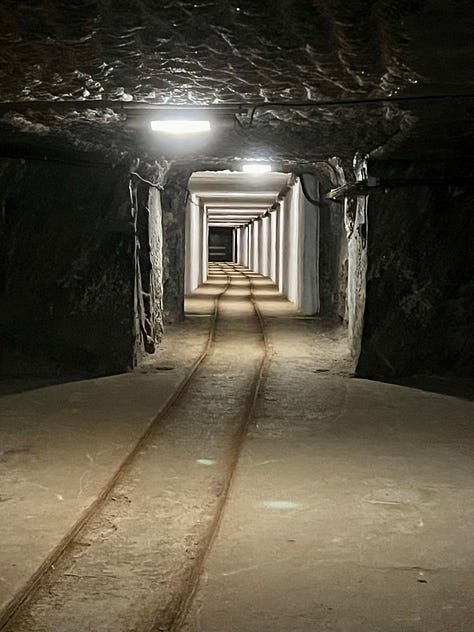
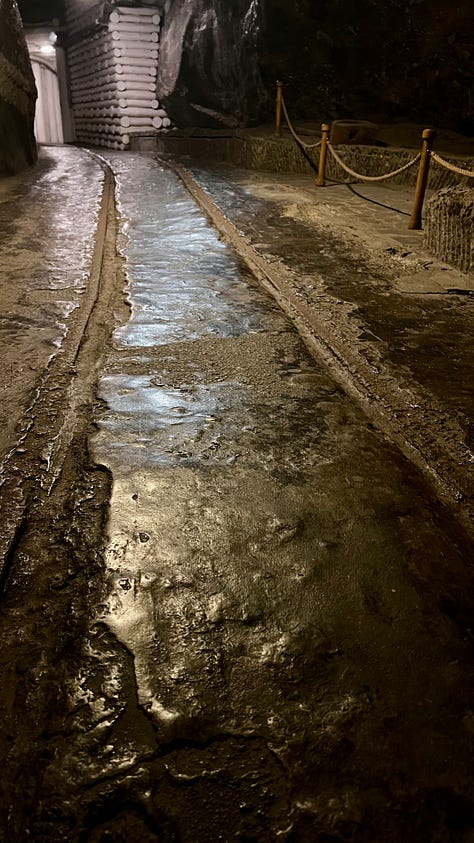
Welcome to the Wieliczka Salt Mine.
Granted, they started digging here about forever years ago, and documented with real tunnels and chambers and stuff about 1000 years ago, but still, it was almost all by hand, and using hand tools. Impressive. As they carved out the chambers, though, they also added bits and pieces of art carved directly into the walls, or created statues and placed them in arcades and niches along the way. The “way” being these tunnels that, even though they are mainly passages to richer stores of salt, are still basically, well, salt. Our guide encouraged us to lick it and determine it for ourselves. I did. It was like I was licking the rim of a margarita glass, while sitting on a tropical beach watching the sun set.
Without the margarita. Or beach. Or sun, for that matter. I was 135 meters (445 feet) below the surface. Don’t let that fact get into your head. Nope. Don’t even think about the millions of tons of rock (salt) hanging over your head like the sword of Damocles.
Ha. Just kidding. I wasn’t affected. Probably because I didn’t think about it. Probably because I pretty much just don’t think. End of. No matter, I was a happy tourist with an Instamatic around my neck (phone cam in my pocket) wearing my Bermuda shorts (jeans) and sandals with black socks (black Hokas with neon yellow socks) cruising along at the back of the group. One my fellow spelunkers had a minor “event” when we stopped in one tunnel. The ceiling was a few inches above my head (a few taller men were ducking a LOT during the tour), and it was stuffy. She needed to get to one of the more open chambers.
The stuffiness at that location was unusual. Typically the ventilation was so good there were doors installed to keep the wind down. At one point to emphasize the quality of the ventilation, our guide had us hold them open at both ends of a transit. The wind was substantial.
If I was here about 13 million years ago, though, I could have been on a beach. Maybe not sipping a margarita, since glass hadn’t been invented yet, and dinosaurs weren’t into tequila. But a sea was here, and its evaporation is what caused the layers of salt anyway. Timing is everything, eh?
Walking through the maze of tunnels and chambers made me think of Tolkien’s Moria. Especially this door:
I was tempted to say Amigo! to see what would happen. Raise your hand if you got the reference. I didn’t though, because I’d have gotten weirder-than-usual looks from my fellows, so it didn’t magically open. It didn’t open mechanically either, since it was locked. I did learn that it led to one of more than 80 chapels that were scattered throughout the works. Miners needed the assurances, apparently. I can only imagine just how dark and claustrophobic it would be without the electric lights.
The mine was still an active mine up until the late 1990s, when the owners realized they could make more money from tourism than from the salt. Probably a lot more. Salt isn’t the valuable commodity it was before the invention of refrigeration. I think they still extract some via evaporation from pumping brine from the lower levels, kind of like a hobby. It’s nothing compared to the zlotys they make from rubes like me. I dunno, am I rube if I enjoyed it?
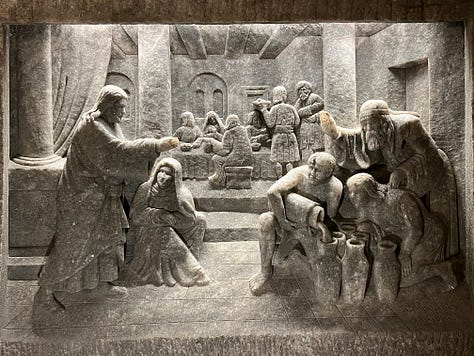
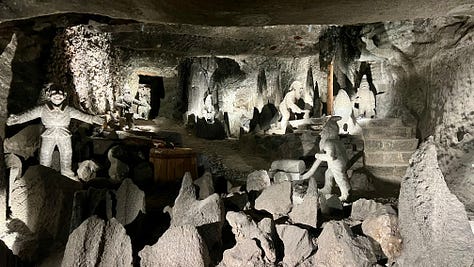

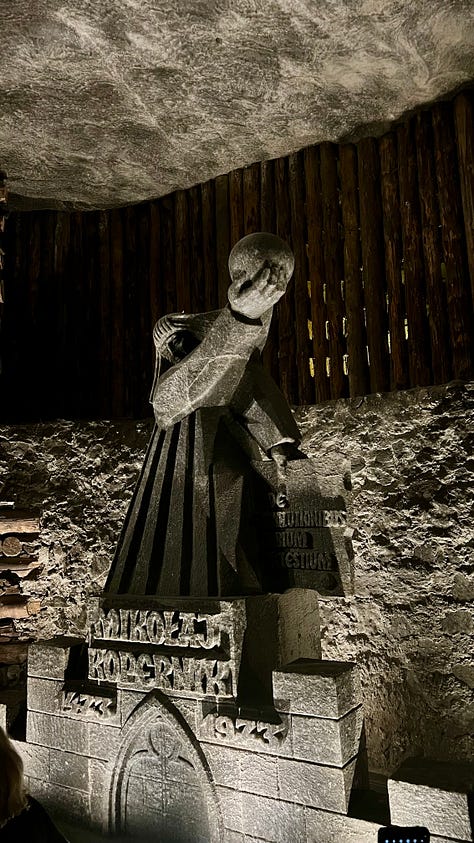
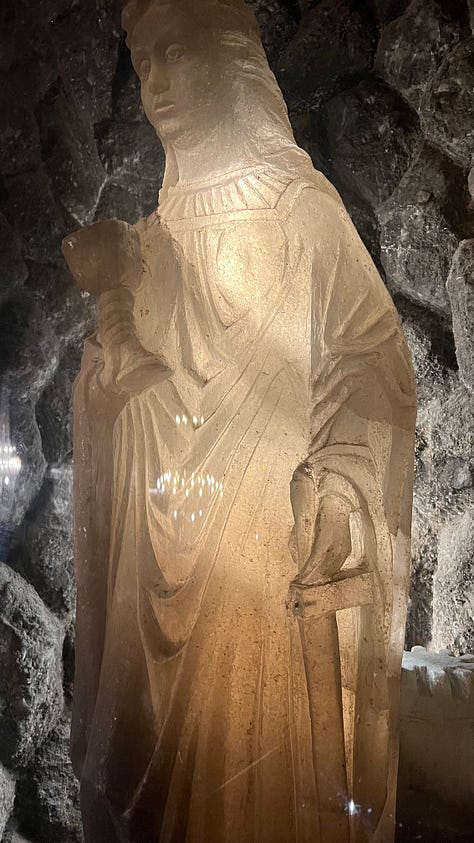
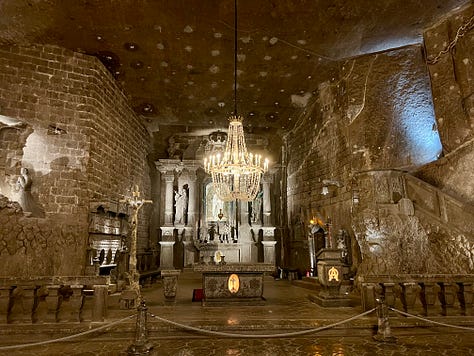
I’m outta Poland in a few hours. Off to Slovakia.
Be kind and take care of yourselves. If you can, care for someone else, too.
Slang, out.


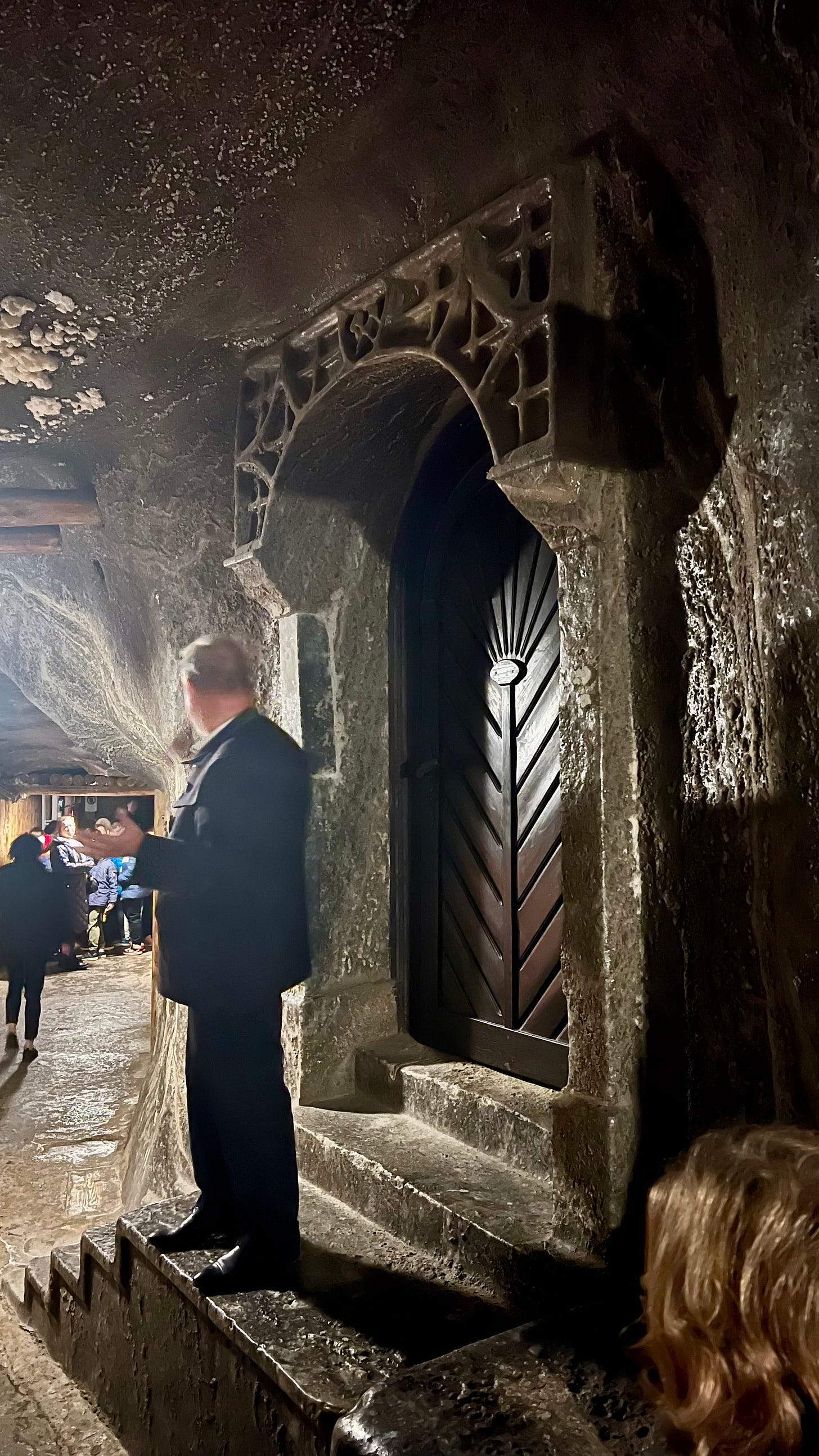
A sculptors playground. Whoops I nearly slipped down.